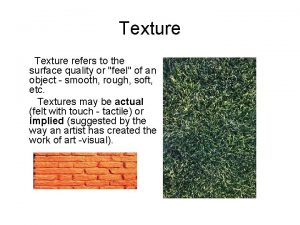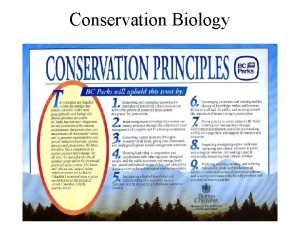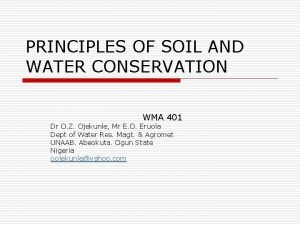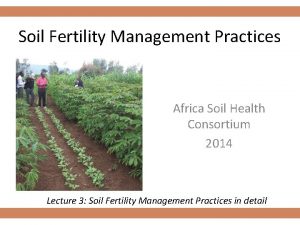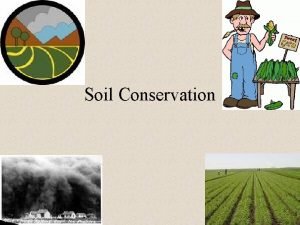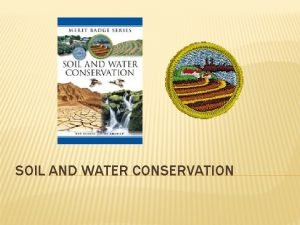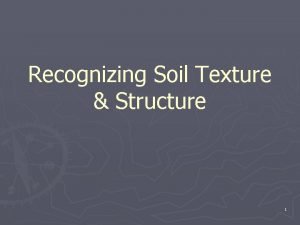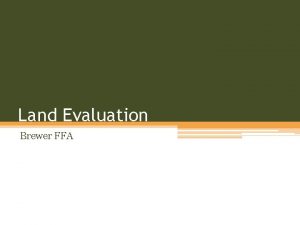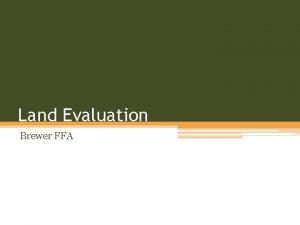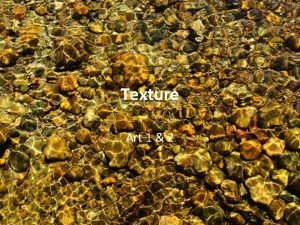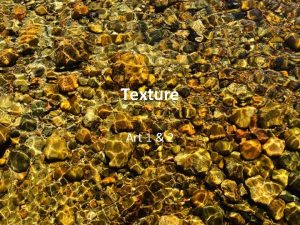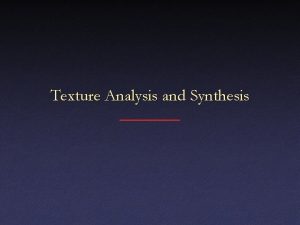Natural Resource Conservation Soil Texture Structure Soil Texture









- Slides: 9

Natural Resource Conservation Soil Texture & Structure

Soil Texture Fineness or courseness of the soil Made up of three particles: ▪ Sand – Large particles ▪ Silt – medium-sized particles ▪ Clay – small particles

Texture affects…. Water-holding capacity The ability of soil to retain water for use by plants Permeability The ease with which air and water pass through the soil. Soil Workability The ease with which soil may be tilled and the timing of the working of the soil after rain. Ability of plants to grow Root crops like carrots & onions cannot grow in fine soil

How is texture determined? Soil Textural Triangle 12 Basic classes of soil texture Ribbon Method

Ribbon Method 5 textural classes determine by using method: Fine-textured – a ribbon forms easily & remains long & flexible. Moderately fine-textured – forms but breaks into pieces ¾ to 1 inch long. Medium-textured – no ribbon forms; sample breaks into pieces less than ¾ inches long; smooth Moderately course-textured – no ribbon forms; sample feels gritty & lacks smoothness Course-textured – no ribbon forms; sample is composed almost entirely of gritty material & doesn’t leave stain on hands.

Soil Ribbon Test

What is soil structure? ? Arrangement of soil particles into clusters or aggregates of various sizes & shapes Formed in 2 steps A clump of soil particles sticks loosely together Weak aggregates are cemented to make them distinct and strong. Structure is very important because… Improves soil tilth Improves permeability Resists beating action of raindrops, eliminating forming of crusts that reduce crop stands.

Various Soil Structures Eight primary types…. (Refer to handout) Granular – aggregates small, non-porous & strongly held together Crumb – aggregates small, porous & weakly held together Platy – aggregates are flat/plat-like

Various Soil Structures…contd. Prismatic Columnar – aggregates prism-like, prismatic has flat caps, columnar has rounded craps. Blocky – aggregates block-like w/ 6 or more sides Single grain – particles exist individually & do not form aggregates. Massive – particles cling together in large uniform masses.
 A quality or feel of the surface
A quality or feel of the surface Resource conservation ethic definition
Resource conservation ethic definition Soil conservation and domestic allotment act
Soil conservation and domestic allotment act Soil conservation and domestic allotment act
Soil conservation and domestic allotment act Soil conservation and domestic allotment act
Soil conservation and domestic allotment act Objectives of water conservation
Objectives of water conservation Hepscd
Hepscd Africa soil health consortium
Africa soil health consortium Soil conservation
Soil conservation Explain water pollution
Explain water pollution
